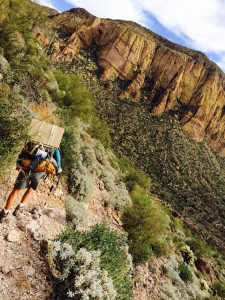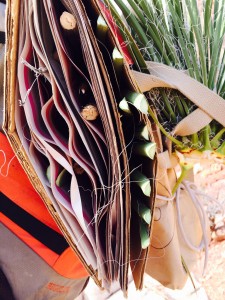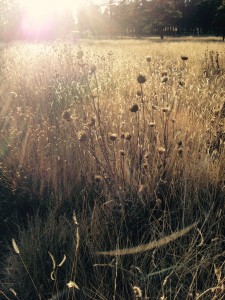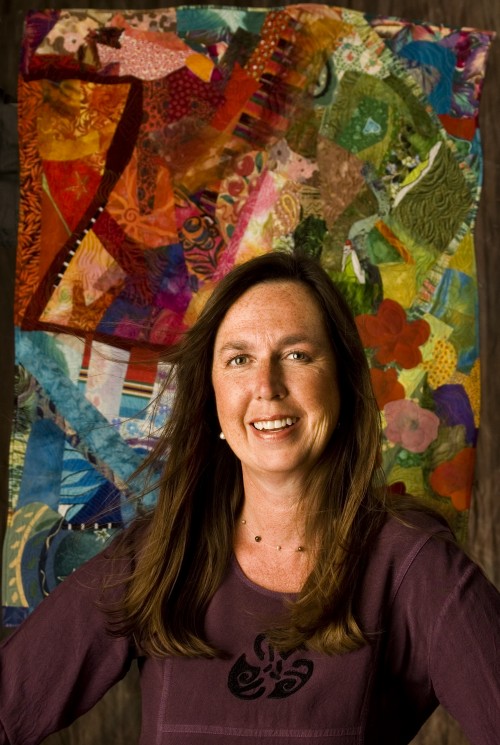 Now that I’m finished procrastinating – the dishes are washed, the laundry is done, and my desk is cleaned off – I can sit down to write with a clearer head. Today is a day for being inside. After a temperate fall, snow has at last coated the bare aspens: white on white. Late in the afternoon the sky cleared enough for a peek of blue. In the northwest, they call that a sucker hole, but here it’s a promise: tomorrow will be clear and cold, with sunlight glinting off the snow, and the streets clearing off nicely.
Now that I’m finished procrastinating – the dishes are washed, the laundry is done, and my desk is cleaned off – I can sit down to write with a clearer head. Today is a day for being inside. After a temperate fall, snow has at last coated the bare aspens: white on white. Late in the afternoon the sky cleared enough for a peek of blue. In the northwest, they call that a sucker hole, but here it’s a promise: tomorrow will be clear and cold, with sunlight glinting off the snow, and the streets clearing off nicely.
The solstice is nearly here and I’m trying to remember to lean into it, instead of cowering under the covers or next to the fireplace for the next three months. Time to brave the rocky path of winter.
 The mild fall allowed Roberta, Wendy and me to go backpacking a few weeks ago in the Superstition Mountains. Most times our procession went in exactly that order: I like being last. With a backpack on, I’m a little slow and not always surefooted, especially when the trail is rocky. If I need to slow down I do that less self-consciously than when someone’s following me. I battle my thoughts on rough trails, as I consider what small, but multitudinous obstacles bar the way to my destination versus my skills to overcome them. When faced with such things I don’t usually cry, but I’ll admit having had the impulse to weep and wail, or – like a tired toddler – plop down and refuse to go any further.
The mild fall allowed Roberta, Wendy and me to go backpacking a few weeks ago in the Superstition Mountains. Most times our procession went in exactly that order: I like being last. With a backpack on, I’m a little slow and not always surefooted, especially when the trail is rocky. If I need to slow down I do that less self-consciously than when someone’s following me. I battle my thoughts on rough trails, as I consider what small, but multitudinous obstacles bar the way to my destination versus my skills to overcome them. When faced with such things I don’t usually cry, but I’ll admit having had the impulse to weep and wail, or – like a tired toddler – plop down and refuse to go any further.
To keep our minds engaged on the trail, we made up names for religions we feel we’re a part of: Church of the Latter Day Basalt, Sisters of the Order of the Pearly Everlasting. (Pearly Everlasting is the common name for anaphalis margaritacea, a plant Wendy showed us along the trail, and the whimsical name enchanted me.) Wendy, a senior research botanist and curator of the herbarium at the Desert Botanical Garden in Phoenix, says she’s a Jojoba Witness. (Jojoba also grows in that part of the state.)
 Going back many years, I’ve had a number of friends who are professional or amateur botanists. Every time I go into the field with them I learn a new plant or two. These women are smart and tough, with plant presses made of cardboard and newspaper strapped to the outside their already fully laden backpacks, having collected specimens along the trail, or in the bush near the trail. Their arms and legs get scratched from barreling through brush, or doing battle with prickly pear cactus, agave, or crown of thorn plants. It’s not unusual to see them down on hands and knees, butts in the air, inspecting some tiny green thing. From them I learn what plants smell amazing, and how to slim down your backpack so you can carry the extra bundle of collected plants.
Going back many years, I’ve had a number of friends who are professional or amateur botanists. Every time I go into the field with them I learn a new plant or two. These women are smart and tough, with plant presses made of cardboard and newspaper strapped to the outside their already fully laden backpacks, having collected specimens along the trail, or in the bush near the trail. Their arms and legs get scratched from barreling through brush, or doing battle with prickly pear cactus, agave, or crown of thorn plants. It’s not unusual to see them down on hands and knees, butts in the air, inspecting some tiny green thing. From them I learn what plants smell amazing, and how to slim down your backpack so you can carry the extra bundle of collected plants.
Or just how to suck it up and survive: one frigid January, three of them spent an unexpected (and unequipped) night huddling next to the Spencer Trail, above Lee’s Ferry, having hiked too long to come down the perilous trail in daylight hours.
On this latest trip, I used Mike’s hiking stick and paced myself up and down the hills, feeling grateful for living at 7000 feet and hiking lower. And then I had one tiny little misstep, twisting my knee just a little bit wrong. It wasn’t catastrophic, but it slowed me down even more than usual, and I breathed a little easier when the lake where our car was parked came into view on the last day.
My knees have been a bit troublesome in the past few years, probably because I make good use of them. Walking is my religion: instead of getting down on my knees, I march around in the woods, up and down hills, and along ridges.
Now I’m in rehab mode, and have been walking around Buffalo Park most days. That trail is wider and smoother, allowing me to look up while I walk, to think about things other than where to put my feet. I notice the water that collects in the basin of the boulder next to the path, and the shape of the fog bank that clogs the sky to the east. I can attend to whether the clouds are building or dissipating. And what exactly are the colors of those clouds: dark grey and pink, or creamy white and deep purple?
Depending on which way it’s blowing, the wind carries the clear, clean scent of an incoming storm or the reek of dog food cooking at the Purina plant. When I walk alone, I listen closely to music and catch lyrics that I rarely notice otherwise. I can get lost in my own thoughts, instead of working so hard for every step.
 I get ecstatic about the way the late afternoon light silhouettes the stems of dried grass, lighting them up like something sacred. The whole place feels like a giant altar.
I get ecstatic about the way the late afternoon light silhouettes the stems of dried grass, lighting them up like something sacred. The whole place feels like a giant altar.
A wide smooth trail isn’t better than a rocky one, just as winter isn’t inherently better than summer. Walking that clear path, it’s easy to be confident. But there are great benefits to be gained by walking through rubble on the path less traveled and to greeting winter with a joyous and open heart: adopt a braver perspective, see unusual sights, learn your limits, do battle with your inner demons, and make up new religions.

